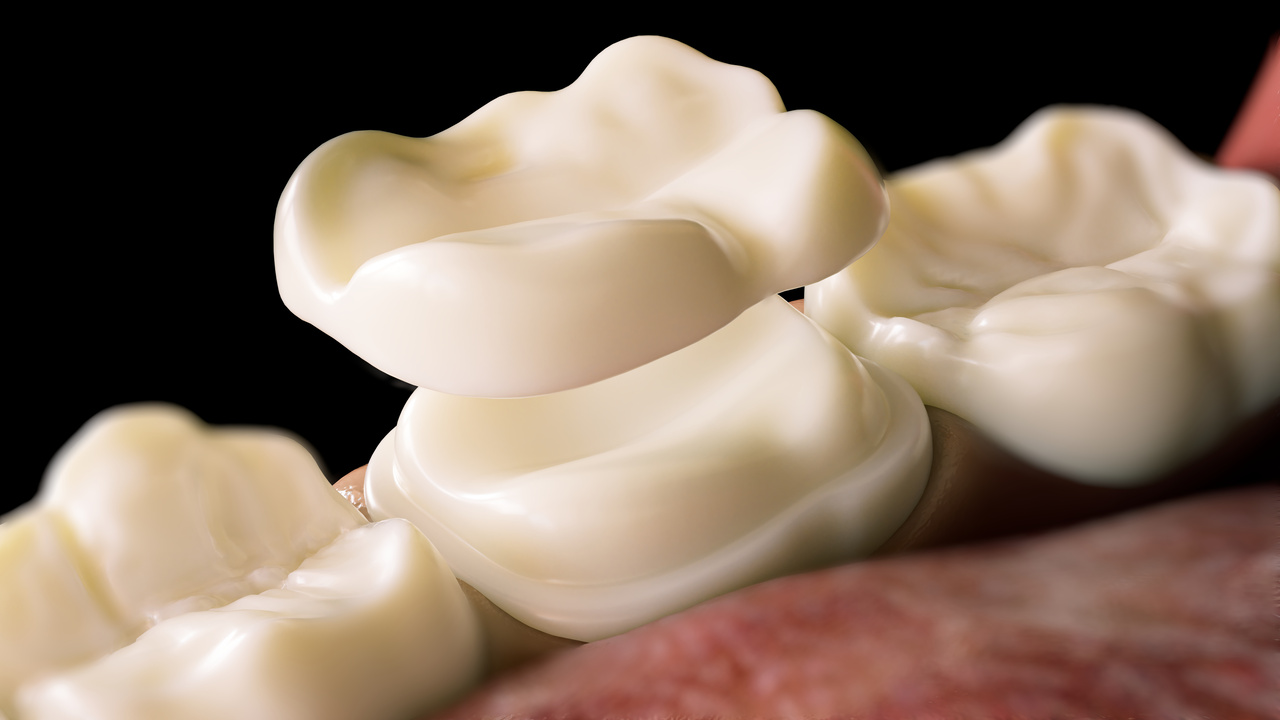When it comes to restoring damaged or decayed teeth, there are a few different options available. Two popular options are inlays and onlays, as well as crowns. While these may sound like complex dental procedures, they are actually quite common and can greatly improve the function and appearance of a damaged tooth. However, with so many choices, it can be overwhelming to make an informed decision on which option is best for you.
At Journal Square Dental, we aim to simplify this decision for you. Our team of dental professionals will walk you through each treatment, explaining the pros and cons so you can choose confidently. Rest assured, our goal is to help you make a decision that is right for your unique situation and needs.
What Are Inlays and Onlays?
Inlays and onlays are types of dental restorations often used to repair back teeth with mild to moderate decay or cracked and fractured teeth that don’t need a full crown. The key difference between the two lies in their coverage – inlays fit within the cusps (or bumps) of a tooth, while onlays extend over one or more of these cusps.
Made from durable materials like porcelain, composite resin, or sometimes gold, inlays and onlays are custom-crafted in a dental lab to perfectly match the natural shape and color of your tooth. These restorations are highly favored for their conservative approach, preserving as much of the healthy tooth as possible.
The process involves removing the decayed or damaged area of the tooth, taking an impression, and then bonding the inlay or onlay to the tooth. This not only restores the tooth’s strength and function but also enhances its appearance. In comparison to crowns, inlays and onlays require less tooth removal, making them an ideal choice for patients seeking to maintain more of their natural tooth structure.
What Are Crowns?
Crowns, often referred to as caps, completely cover a tooth that is significantly damaged, decayed, or misshaped. They can be made from various materials, including porcelain, ceramic, metal, or a combination of these, depending on the patient’s preference and the dentist’s recommendation. Crowns are typically recommended when the structural integrity of the tooth is compromised to the point where inlays or onlays may not provide sufficient protection or strength.
The process for getting a crown involves preparing the tooth by removing a portion of its enamel to accommodate the crown, taking an impression of the tooth, and then placing a temporary crown until the permanent one is ready. Once completed, a crown looks and functions like a natural tooth, offering a durable solution for restoring a tooth’s shape, size, strength, and appearance.
How to Choose Between Inlays, Onlays, and Crowns
Deciding between inlays, onlays, and crowns involves considering the extent of tooth damage and your long-term dental health goals. If your tooth’s damage is minimal to moderate or not affecting the cusps, an inlay might be the best choice, preserving a significant amount of your natural tooth.
On the other hand, if the damage extends to one or more cusps but doesn’t encompass the whole tooth, an onlay could provide the coverage and support needed while still maintaining much of your tooth’s structure. Crowns come into play when the damage is more extensive, covering the entire tooth. This option is suitable for teeth that have undergone significant decay, fracture, or have a large filling that is failing, and in cases where a tooth has been root canaled.
While crowns offer the most comprehensive coverage, they do require the removal of more tooth structure compared to inlays and onlays. Your dentist will evaluate the extent of tooth decay or damage and discuss your options with you. The ultimate goal is to select a restoration that ensures the longevity and health of your smile.
Make an Informed Decision for Tooth Restoration at Journal Square Dental
Choosing the right restoration for your tooth can be daunting, but at Journal Square Dental, we’re here to help. Our experienced dental team will guide you through the options of inlays, onlays, and crowns, ensuring you understand the benefits and limitations of each. We tailor our recommendations to your specific dental needs, aiming to preserve your natural tooth structure while enhancing function and appearance.
Our commitment to advanced technology and personalized care means you receive the best possible treatment in a warm, welcoming environment. Whether you need a minor repair or a full crown, you can trust us to restore your smile with precision and care. Contact Journal Square Dental today at (201) 431-0288 or through our contact form to schedule your consultation.


